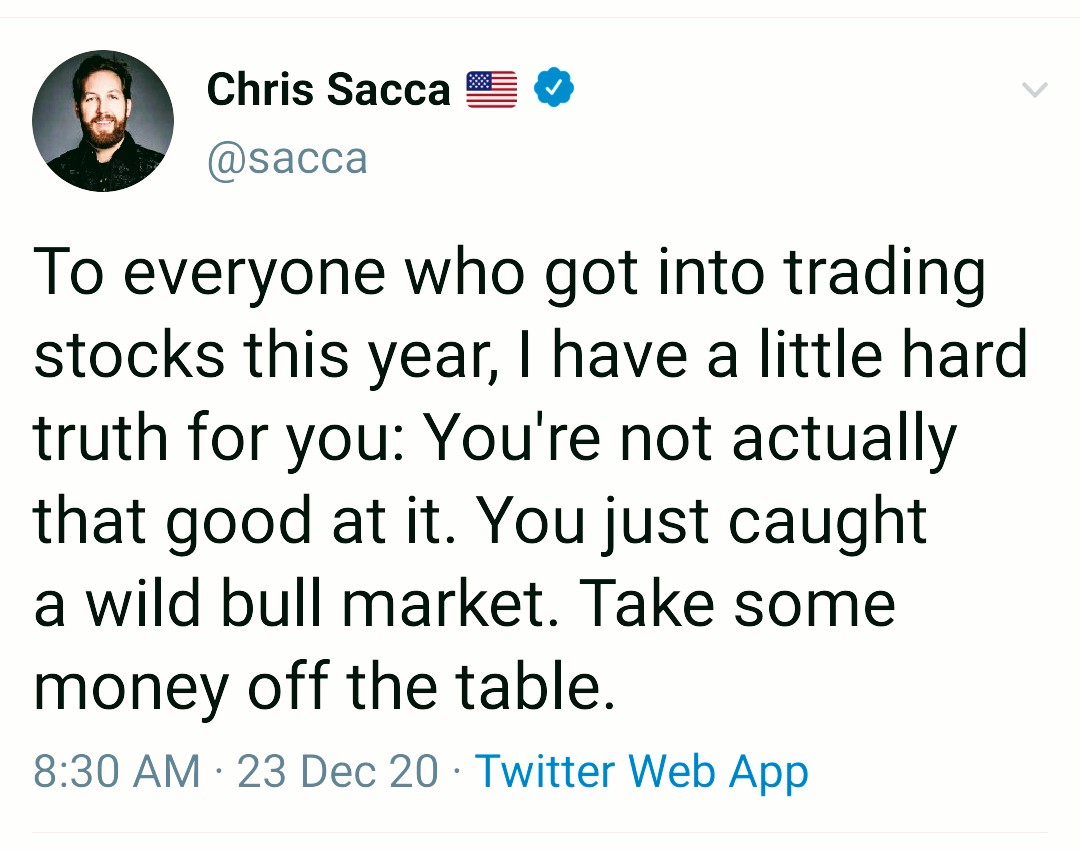Sir John Templeton, the founder of Templeton funds, once said that the four most expensive words in the English language are ‘this time is different’. These words are usually uttered when market euphoria is running high, brought about by some dislocation in the economy. That dislocation could come about due to technological changes or some macroeconomic event that make investors rethink the old, stodgy paradigms around things like valuation, cash flows, profits etc. Investors are hence willing to pay any price just to participate because well, this time is different.
But whether it is different or not can only be known in hindsight. But when a majority of investors believe that this time is indeed different and are getting rich of it is when the chasm between asset prices and their underlying value grows. That’s happened in the past and will continue to happen in the future. That’s human nature.
So is this time different? Similarities are aplenty between the current stock market boom, especially in tech, with the Dot-com boom at the turn of the last century. New public listings were seeing euphoric rise in prices then as they are seeing now. Investors were willing to fund anything and everything that moved back then whether a viable business existed or not. Something similar appears to be the case now.
And a viable business of course means not just revenues but profits and cash flows. And sustainable at that.
So though there are a lot of similarities, there are BIG differences.
The price to earnings ratio of the stock market today stands at around 30, about the same as it was during the late 1990s. So the earnings yield of the stock market hence is 3.33% (earnings/price), about the same during both periods.
Now if you had money to invest, did you have viable alternatives to bypass the craziness with the stock market back then? You indeed did.
Back in the day, a 10-year Treasury bond yielded 6.5% so you could have locked in that yield every year for ten straight years. And mortgage rates are tied at the hip with Treasury bond rates so real estate had to yield the same or more. And it did.
No such luck now with yields on that same bond at less than 1%. There is no suitable alternative. Yields are low on pretty much everything and prices are hence, sky high.
One more thing that’s different between now and back then is the sheer size of the market debuts of many businesses going public today versus in the past.
Amazon went public in 1997 at a 438 million dollar valuation, literally a small-cap. Microsoft, a decade before that had its public market debut at $700 million valuation. Apple at a billion.
So public market investors at the time were literally getting in on the ground floor. They were the venture capitalists of the day.
And we know the venture capital business model. Most investments go nowhere with only a tiny fraction of them making up for all the losers. And that is what happened back then. You had to spray your money at many businesses going public at the time to get one Microsoft or Amazon or Netflix. That’s how it works. That’s how it was supposed to work. That was the 1980s and the 1990s.
And then the market crashed. Investors who were happy making money when all was great cried foul. So the politicians intervened to ‘protect’ the mom and pop investors from themselves but in that process, they killed that golden goose of letting investors participate in the growth phase of many of the businesses of today.
Now part of that intervention was justified because of the Enrons and the Worldcoms and the Tycos of the day but I believe that the pendulum swung too far in the other extreme.
But if investors were a little prudent back then and knew how to behave and participate right in the markets, the situation could have been different. And we sure hope the story ends for the better now but it looks less and less likely with each passing day.
And hence going public today means dealing with all the bureaucracy associated with quarterly filings and reporting to ‘protect’ investors. That takes time away from actually running and growing a business so a big hassle for newly formed companies. Plus the inability of investors to think beyond the next quarter doesn’t help either.
So businesses are making their public market debuts a lot later in the cycle than they did in the past. These are big businesses. Many are a decade old enterprises with established brands generating boatloads of revenues. The only thing that is amiss are profits.
So that’s a troubling sign. And valuations are outright outrageous but investors don’t care. No price is too high because this time is…
The only silver lining with owning these newly public businesses is that a lot of the losers that would have existed in their midst in times past have already been weeded out in the private sphere.
So private investors are absorbing a lot of the failures and only the ‘real’ ones are getting to you and me. But then we miss out on the growth phase of many of these businesses so both good and bad. I think it eventually cancels out but the process of going and remaining public needs an overhaul.
So my advice, if you care, to you is this:
- Limit this craziness to a portion of your portfolio that if it all goes to zero, will not disrupt your life. Start today and slice off say 10% of your chunk and go at it. That’s your Vegas money. Don’t add more. You don’t have to do any of it but if you must insist.
- Future returns are going to be low. There is no way that risk-free rates could be zero and yet you continue making double digit returns. That’s theoretically not possible. So don’t get used to this and plan to save more.
- The party will be over at some point. Low interest rates amplify asset volatility and the only side we are getting to see is the positive side of that volatility. The negative side is coming. That’s not to fear though. Just expect it and embrace it by sticking to your plan.
Rounding this off with this snapshot of a tweet from Chris Sacca, an early investor in some of the hottest brands around (Twitter, Uber, Instagram). I like him a lot. He means well. And there are many more in this business today who mean well. They are a different crop who care about all stakeholders and for them, making money is just one aspect. That should remain and that’s great.

So that’s that.
Thank you for reading.
Until later.
Cover image credit – Andrey Grushnikov, Pexels

